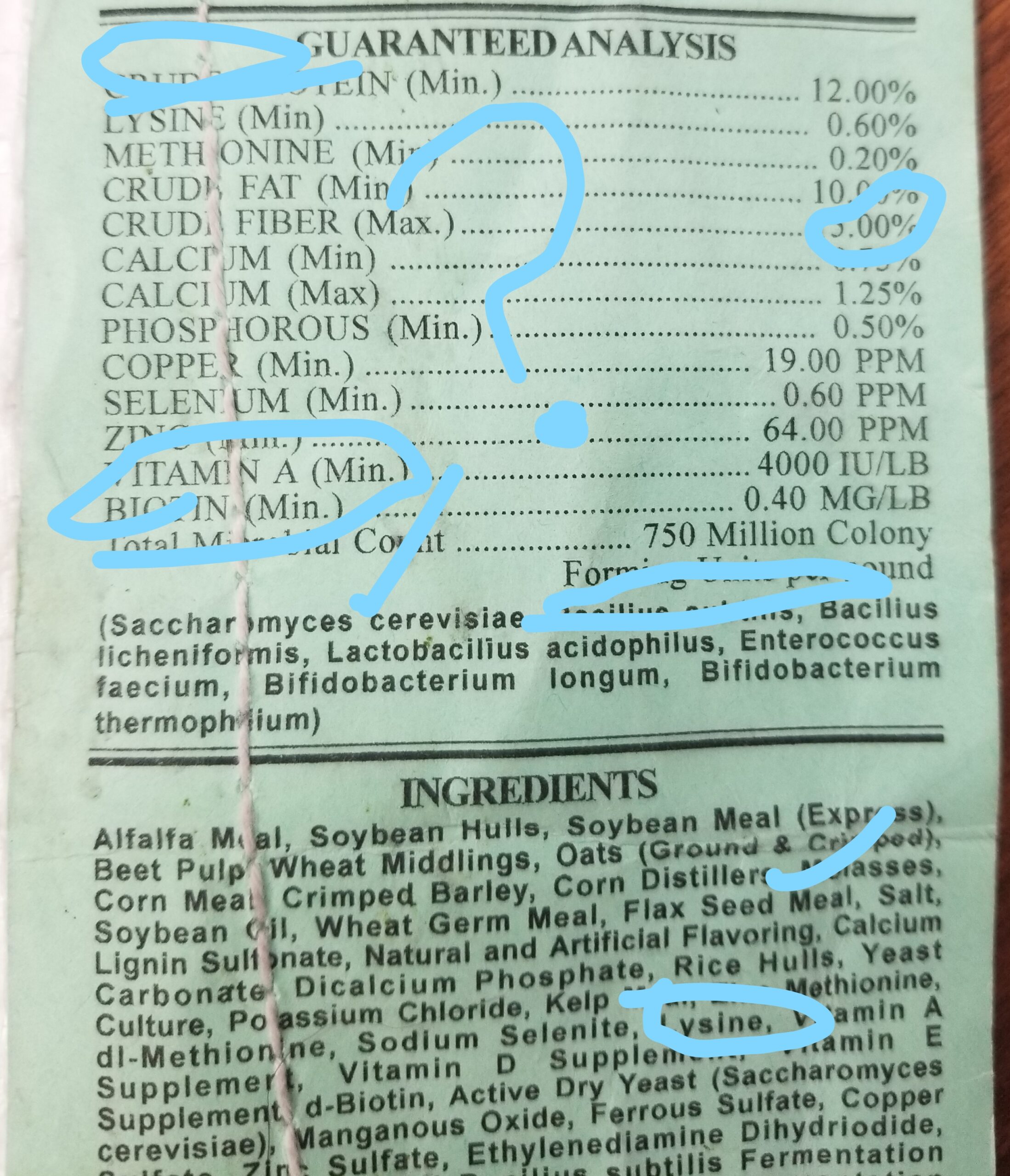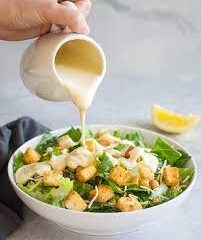Playing Feed Tag BINGO

There are currently hundreds of commercial horse feed formulations offered by just the major feed companies. If we include the smaller companies and local mills the number increases into the thousands.
Owners use different criteria for making these decisions but the one I see most frequently is the feed tag. Why not? The feed tag lists nutrients and ingredients in a convenient presentation so why not use feed tags as the primary decision making tool for our horse feed?
Sadly, most of the “experts” owners have access to, like feed store associates, default to comparing feed tags or specifications in a manufacturer’s “handbook”. I hate to be trite but “blind leading the blind” is a good fit here.
Another truth is that many companies, especially local and regional mills, rely on owners playing the feed tag bingo game and use tags as marketing tools.
There are a few great reasons for not relying on feed tags to choose your horse feed.
Feed Tags do not Guarantee Performance
While feed tags can give us some clues on how well a feed will perform the information is far from definitive. The performance of the feed depends entirely on the quality of the ingredients and the formulation of those ingredients.
Most feed tag bingo is based on the big three nutrients; Protein, Fat and Fiber. When
The guaranteed analysis only guarantees that the feed will pass an analysis done by a government testing lab. These tests will check on the values of the nutrients listed. A test will tell you if a 14% protein feed contains 14% protein. Quality and bioavailability of the protein in the feed will not be revealed by the test. Ground poultry feathers will spike a protein value on an analysis but your horse won’t absorb a gram of it.
Corn is an excellent source of protein, fat and fiber. It’s also relatively cheap. Using corn as a base will generate an excellent feed tag but poor performance and terrible consequences.
High fat feeds have become popular in recent years. Not only is the fat source significant to performance but without a solid amino acid package to support the protein the protein to fat ratio is completely unbalanced.
Ingredients Matter
Drilling down into the list of ingredients will offer some clues but identifying and understanding the differences in ingredients is laborious.
The GA lists “lysine” and when we look at the ingredients “lysine” is listed. Unfortunately your horse won’t recognize “lysine” it needs to be “L-lysine” to be bioavailable to your horse.
How about iron sources? Some ingredients list ferrous oxide and some list ferrous carbonate. Significant? Probably not but this is another great example of cost versus bioavailability and quality.
Just because an item is listed on the list of ingredients doesn’t mean it’s doing anything good.
On the other hand, vague and broad terms on the list of ingredients aren’t necessarily a bad thing. “Forage products” include high quality ingredients like beet pulp and alfalfa. A manufacturer may use this term to enable more flexibility in substituting one high quality forage product for another depending on availability.
Formulation Matters
Try to think of horse feed like soup. A soup may contain all very healthy and tasty ingredients but still turn out terribly.
Baking is probably an even better example because in order for there to be a great cake the proper ingredients must be combined in exact amounts then baked at exactly the correct temperature for the perfect amount of time.
Because horses evolved to thrive on a poor quality nutrient source like grass it is very easy to create a nutrient imbalance that will be very debilitating for horses. Calcium and phosphorus in the wrong ratio will cause some serious issues.
Let’s Talk “Tag Dressing”
“Tag Dressing” is the industry reference for placing all kinds of whiz bang things on the feed tag. Essential nutrients are required to be listed on the GA. Other nutrients are not required but if they are listed are then subject to verification testing.
Lot’s of other junk is neither required nor optional but are added to the tag so that a feed manufacturer can claim that their feed is more fortified.
Probiotics, gut supplements, joint supplements and heavy metals are a few examples of “tag dressing”. Here are some questions to ask;
Do these ingredients really work?
If the ingredients work, are they available in enough quantities to be effective?
If the feed includes all these extras for the same price as a competitor what was sacrificed to make room for these ingredients?
Sometimes What’s NOT on the Tag Matters
If “sugar” and “starch” are not listed on a guaranteed analysis as maximum values by percentage I wouldn’t even consider using the feed. Even if, and maybe even more so, a company lists “NSC” on their website or the feed tag. I say “even more so” because I feel this is totally misleading. If you make a claim of NSC then guarantee it on the tag.
Lysine is the limiting amino acid in horses which means that without sufficient lysine in the horse’s diet it will get no benefit from any of the protein it consumes. If lysine is listed on the GA at more than .60 % and L-lysine isn’t on the list of ingredients the feed is worthless.
These are only two examples.
Research Matters
How were these formulations determined? Computer modelling is an easy way to come up with a recipe that can be fed into the feed mill equipment but it doesn’t mean it’s going to work.
Was this feed tested on horses? Don’t laugh. The vast majority of feeds on the market today were never fed to a test herd before it was shipped to your feed store. Go back and read this again.
There are only a very few feed companies out there that have the financial resources to conduct research and testing on their own herds of horses before moving to field trials at teaching universities.
The smaller competitors will cast doubt and disparagement on the big companies claiming that profit is their only motivation and mass produced feed. I can tell you from personal experience that these claims are unfounded and the big companies do extensive research and testing of their products before they are released for sale. Mainly because they have the most to lose or gain from the quality of their product.
How to Choose?
I wish I had an easy answer for you because it isn’t easy to sift through the noise. Here’s some advice I can offer.
Ignore claims of efficacy or results. If a feed company is telling you that their feed is “safe”, “calming”, “reduces inflammation” and other claims of efficacy it is all marketing because no feed can make these claims unless they have independent research to support those claims.
Just because a feed contains an ingredient that has shown efficacy during tests doesn’t mean that ingredient will be effective as part of the feed.
Reach out to the manufacturer with questions.
Where was this feed developed? When was it tested? For how long? On how many horses? What were the results? Where is it made? Do you own the mill? What other feeds are made in the mill?
These are good questions to start with but then follow up on their answers. Hold the feed company accountable.
I could name some big, long time staples in feed rooms that couldn’t provide answers to these questions.
Avoid fads. “All natural”, “Wholesome”, yadda, yadda. Horses eat grass. Forage should be their primary diet and their supplemental feed shouldn’t stray too far from the grass family.
Seeds, dried veggies and fruits are not part of a horse’s normal diet.
There is only one other animal that shares the horse’s digestive system; the rabbit. What’s good for us or our dogs or our budgies is NOT good for our horses.
Performance is All That Matters
Once you narrow down your choice, feed it and see how the feed performs. If your horse looks good and meets your performance expectations you have chosen a winner!
Of course if you find yourself adding a little of this or some of that just to “fill in the holes” than your choice isn’t that great. A good feed fed in the proper quantity should not require ANY supplementation.
If you have multiple horses or run a commercial facility a feed trial is a powerful tool. Do your own experiment by selecting four horses and then feeding two one feed and two another. You will be surprised at the results.
The majority of my new customers when I was in a sales role started our conversation with “I love my current feed”. Two weeks into a six week feed trial and they were switching the entire barn.


